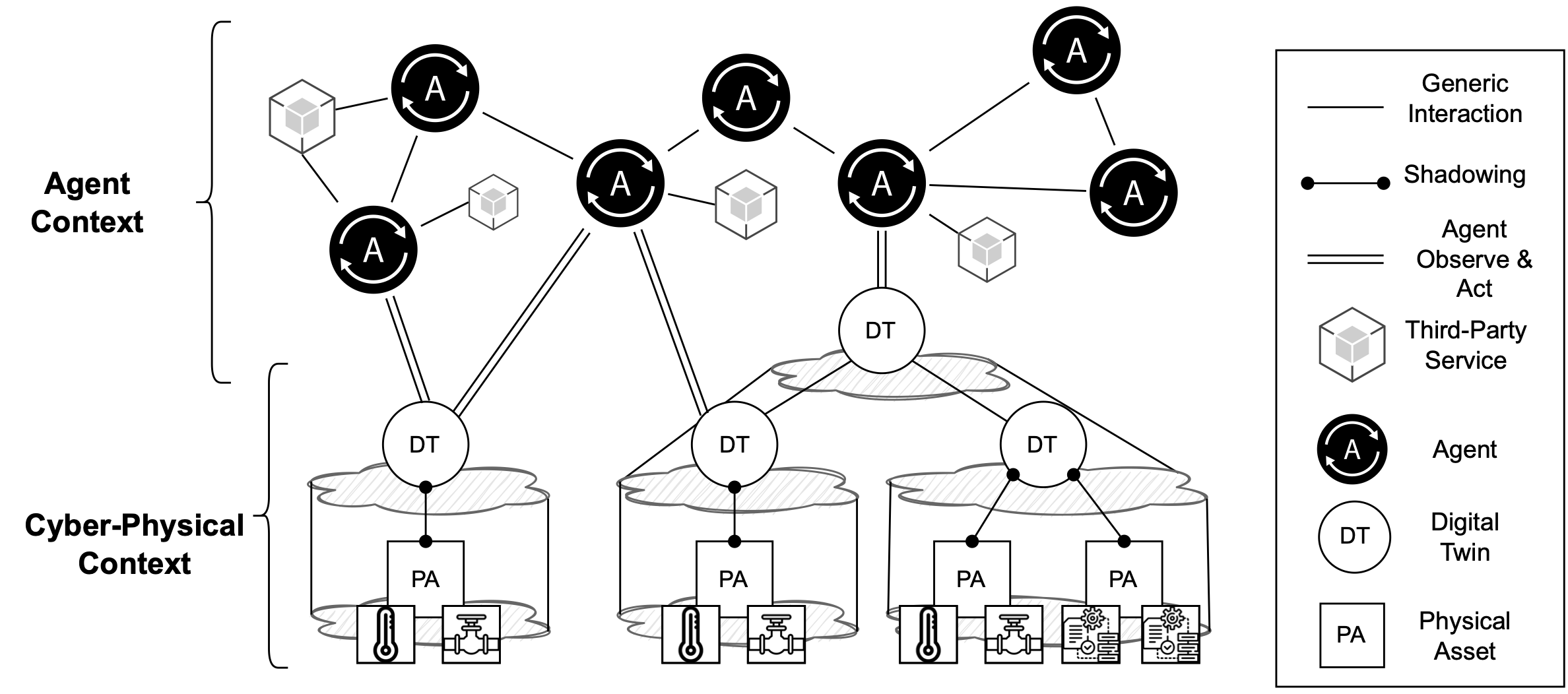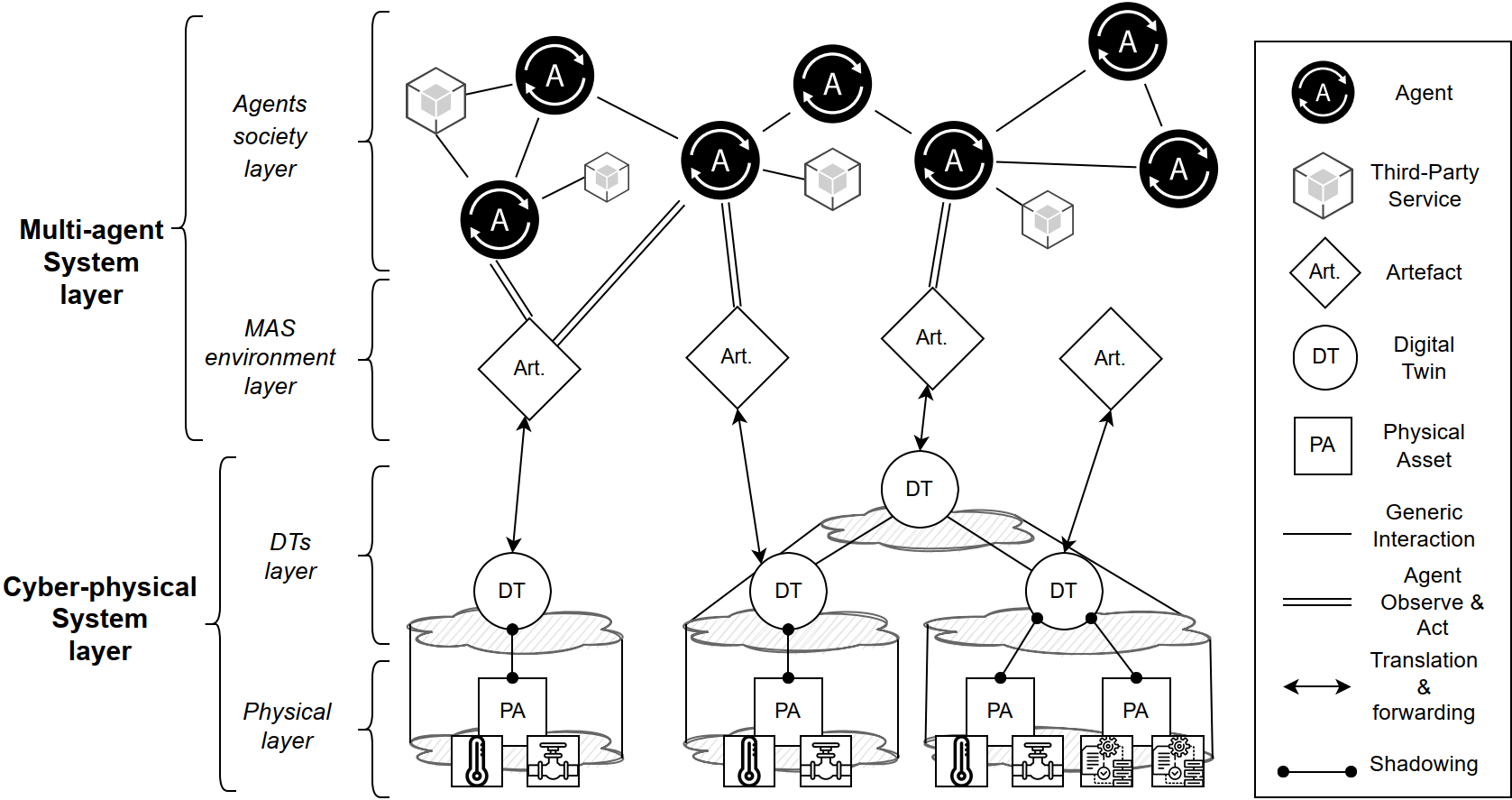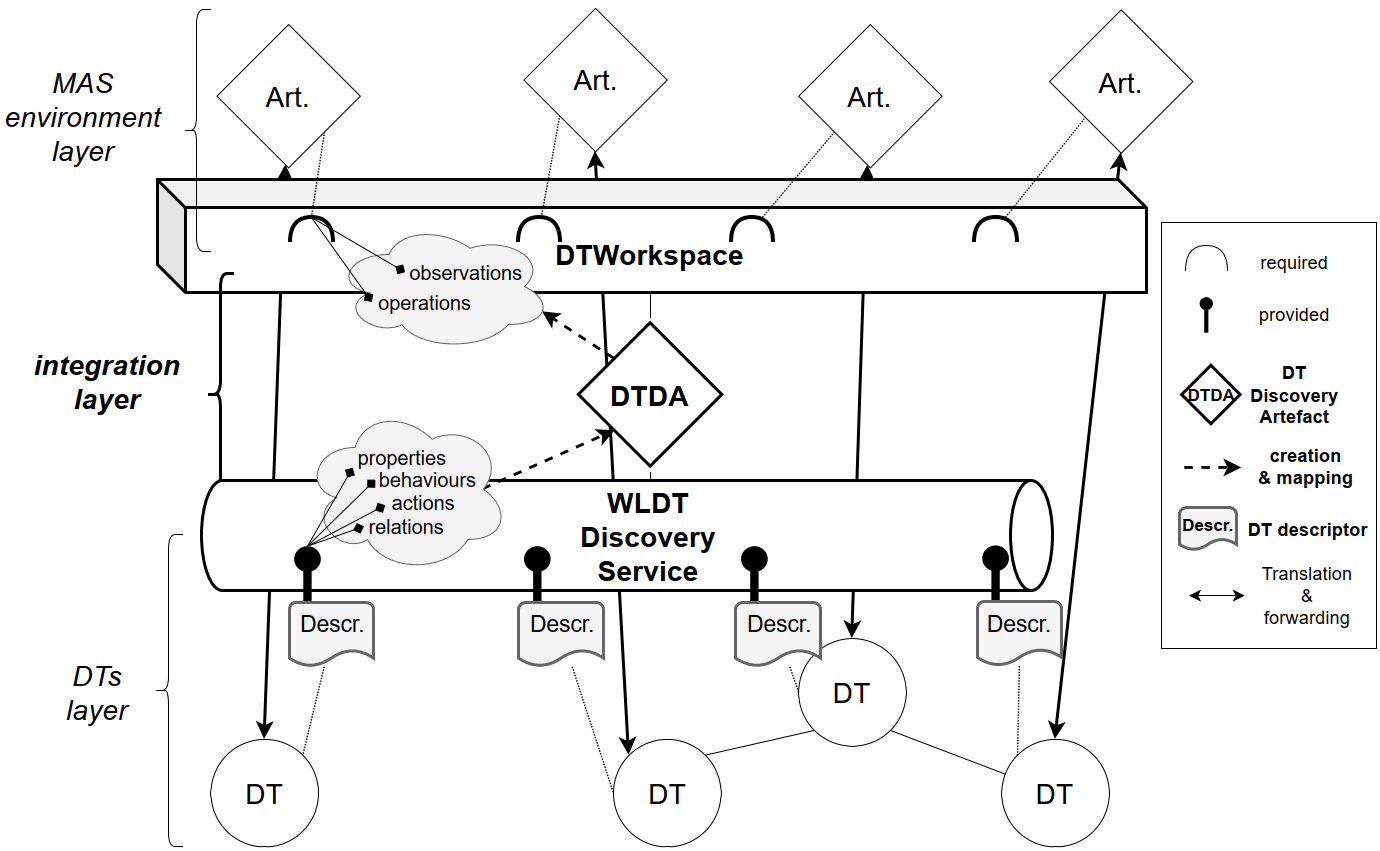EMAS @ AAMAS, 29-30/5/2023
Towards developing Digital Twin enabled Multi-Agent Systems
Stefano Mariani*, Marco Picone*, Alessandro Ricci°
*University of Modena and Reggio Emilia, Reggio Emilia, Italy °University of Bologna, Cesena campus, Italy
Motivations
- MAS lack principled approach to engineer the digital <-> physical frontier
- there are model and methods for environment modeling
- but the focus is mostly on interface exposed to agents
- and the "nuts and bolts" of digital <-> physical connection lack structure
- DTs may fill in the gap!
- uniform and interoperable access to resources
- digital <-> physical synchronisation
Goals
Better MAS environment engineering!
- separation of concerns MAS <-> CPS
- independent evolution MAS <-> CPS
How?
- put DTs between MAS and CPS
- let DTs handle interface towards CPS
Digital Twins
- Virtualisation of real world entities (physical assets)
- Faithful digital replicas
- Deeply intertwined with their physical twin
- Connected in a web of semantic overlays
Ricci, A. et al.: Web of digital twins. Transactions on Internet Technology, ACM. 2021.
Separation of concerns
- DTs operate with full knowledge of the local context of their associated PA
- access to data
- available actions
- knows nothing about other PAs
- Agents operate with partial knowledge of the global context of the application
- application goals
- available DTs
- knows nothing about how to operate on PA
Mariani, S. et al.: Agents and Digital Twins for the engineering of cyber-physical systems: opportunities, and challenges.
Annals of Mathematics and Artificial Intelligence, Springer. To appear.

This separation allows for assigning clear responsibilities during system design!
Conceptual architecture I

Artefacts in A&A
- Bring level of abstraction closer to AOP
- by encapsulating env. resources as agents' tools
- thus mapping MAS env. resources to available perceptions and admissible actions
Omicini, A., Ricci, A., Viroli, M.: Artifacts in the A&A meta-model for multi-agent systems. Autonomous Agents and Multi-Agent Systems 17(3), 432–456 (2008)
Conceptual architecture II
- DTs promote development paradigm closer to devices
- Artefacts promote development paradigm closer to agents
Integrating the two enables our goals!
But how, in practice?
Technical architecture

Enabler technologies
- JaCaMo: jacamo.sourceforge.net
- MAS development and execution platform
- embraces the A&A meta-model via CArtAgO
- programmatic management of artefacts
- WLDT: github.com/wldt
- DTs development and execution platform
- discovery service
- web-ready DT descriptor
DTs layer
- DTDescriptor: JSON/XML representation of the DT
- properties (e.g. temperature, location, local time)
- actions (e.g. turn on, turn off, set temperature)
- behaviours (e.g. turn on until temp > 18)
- relations to other DTs (e.g. thermostat linked to A/C system)
- metadata (e.g. connection protocol, URL)
- WLDTDiscoveryService: advertise & discover DTs
- exposes DTDescriptor to known address
Integration layer I
- DTDiscoveryArtefact: automatically creates artefacts connected to DTs
- DT property <-> artefact observable prop.
- DT action <-> artefact operation
- DT behaviour <-> observable prop. + operation
- DT relation <-> artefact link
- exploits JaCaMo and WLDT services to
- programmatically create artefacts in workspace
- do the mapping above
- set-up bi-directional comm. link artefact <-> DT
Developers' point of view
- MAS side
- develop their agents
- configure DTDiscoveryArtefact with well-known URL of WLDTDiscoveryService
- start the automatic "creation & mapping" process (ad-hoc operation)
- CPS side
- develop their DTs
- publish them to the WLDTDiscoveryService
Little agreement is required -> loose coupling
(both at design and run time)
Conclusion & outlook
- The proposed integration promotes separation of concerns and independent evolution
- We expect to open source the integration during summer 😊
- JaCaMo components are already available (workspaces, artefacts, links, programmatic API)
- Some WLDT components are now underway (discovery service)
- Enabling experimentation of the synergies between agents and DTs!
Thanks
for your attention
Are there questions?
(we hope so 😊)